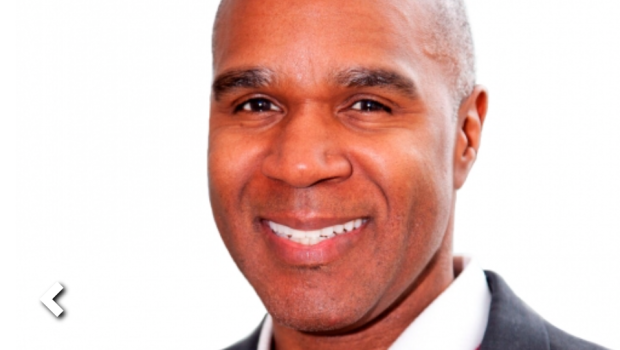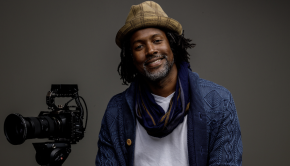5 Steps to Create Systemic Inclusion in Organizations by Amri Johnson
By Amri Johnson
De La Soul said, “Stakes is High”. Nothing could be more true in current times.
George Floyd’s murder along with the tragedies of a global pandemic has been a once-in-a-generation wake-up call to this reality.
Most of us — up until then — had never seen such violence and inequity blasting our senses from every screen, every device, and every website. It was a wake-up call and helped bring anti-racism efforts to the forefront of American and international consciousness.
It also, however, gave birth to a false dichotomy.
The understandable emotion that comes from seeing repeated injustice caused some to think that organizational DEI (Diversity, Equity, and Inclusion) efforts hadn’t worked and that anti-racism and social justice movements were the only answer. However, for those of us in the DEI movement, we know:
- a) The social justice movement birthed and morphed into what is now the DEI movement in order to be more strategic in its approach.
- b) The goal was never to have one replace the other, but to have them both moving in parallel and eventually intersecting.
Everyone is understandably fed up. As a Black man born in Topeka, Kansas, I certainly am as well. But the strategy and sustainability of our work require that we think of this holistically, always mindful of the long game, always cognizant of all things that get in the way of having organizations — and civilizations — thrive through their people. All people. Inclusion and Equity are for everyone, and if it’s not framed with that in mind, you’ll have people think that it’s just for someone else, or for that out group, or for that “other.” And that’s exactly what we’re trying to deconstruct. Why? Because it is an incomplete picture and will lead us on a trajectory that likely leads us back to the same problems that have been perpetuated for a very long time.
This is why I do the work I do.
My name is Amri Johnson. I’m an inclusion strategist, executive advisor, social capitalist, epidemiologist, entrepreneur, former Global Head of Cultural Intelligence and Inclusion at the research division of Novartis, and current CEO of Inclusion Wins, a company I’ve founded with the goal of helping thousands of organizations thrive via inclusive behaviors, leadership, structures, and practices.
Organizations are a microcosm of society. And they can be healed. And when organizations heal — when everyone in the organization, as well as the organization itself, sees tangible benefits from the purpose of DEI work — society begins to heal as well.
That raises the question: How can organizations heal and become what I call “generative” (delivering value for themselves and the larger societies where they operate and their people reside)? How can organizations make inclusion accessible (to everyone), actionable (unambiguously prioritized), and sustainable (aligned with organizational purpose)?
I’ve created a Systemic Inclusion Survey™ in order to help organizations evaluate and improve their diversity, equity, and inclusion (DEI) efforts using a systems engineering approach. In it, I detail five steps organizations can follow to create an Inclusion System, which I define as a set of principles and organizationally established requirements and relational practices that serve as a vehicle to create generative organizations where everyone can thrive and contribute their best. Because that is the end goal and the tangible benefit of DEI work: an environment in which everyone feels safe and welcome, and can therefore reach their potential and deliver spectacular results.
The five steps for organizations to follow in order to create an Inclusion System are as follows:
1) Analysis – This is the audit to gain clarity about the current state of the organization. Most organizations and consulting firms that work in DEI or organizational development use various data sources to assess the organization’s current state. For the most part, their analysis will reveal few surprises, and say things that might be consistent with participants’ actual observations and experiences. However, if the audit focuses on problems that influential organizational actors have been blind to, defensiveness will likely be high. In this case, I advocate for accessibility. Find ways to approach the problem that get at systematic pros and cons in a manner that will likely produce data that is accessible to most (if not all).
2) Requirements – These are dialogues and conceptual elements envisioning the future state of the organization. If you are indeed committed to creating an Inclusion System, there are three crucial necessities to building one for your organization: a) Mindset/Unlearning – rethinking and more deeply understanding how to choose appropriate action, b) Skillsets – going beyond willingness and into building a set of capabilities, and c) Structure and Data – measurements that allow insights beyond representation alone.
3) Design and Design Thinking – Similar to how a software engineer would do her best to prevent bugs that might occur in the development and implementation phases, in the design phase of inclusion systems development you are considering what can enable robust uptake and application of the requirements. You are also being thoughtful about those bottlenecks you can anticipate and realistic about those that will require a response that you can’t possibly know and will need to adapt to as they emerge.
4) Development – This is the production or instillation stage. Based on what was learned and discussed through the analysis, requirements, and design phases, we will clarify and confirm the inputs the organization will engage in now and in the future, as well as the urgency with which these inputs will be enacted.
5) Implementation – This is where you take the development of your inputs and insert them into the system to get feedback. Once you commence with an input, the process necessitates that the input leads to capability, skill building, along with your people and organization thriving.
Successful Inclusion Systems are those that are built and implemented to choose humanity – all humanity. All inputs should be clearly framed to elevate everyone in an organization. Even if particular inputs (e.g. racial equity) focus on the needs and interests of a subset based on identity or various attributes, it is critical to bring clarity that allows everyone to see how this benefits all directly or indirectly – that the work’s intention is to help everyone grow and thrive, and for the organization to generatively evolve.
About Amri:
For over 20 years, Amri Johnson has been instrumental in helping organizations and their people create extraordinary business outcomes. Johnson is the CEO/Founder of Inclusion Wins and the author of the new book “Reconstructing Inclusion: Making Diversity, Equity, and Inclusion (DEI) Accessible, Actionable, and Sustainable.” An inclusion strategist, executive advisor, social capitalist, epidemiologist, and entrepreneur, Johnson’s mission is to create thousands of organizations that thrive via inclusive behaviors, leadership, structures, and practices. With an English and biology degree from Morehouse College and a Master’s degree in Public Health from Emory, Johnson is building a global cooperative of people-focused solution providers whose work is informed and enhanced by inclusiveness. He is currently based in Basel, Switzerland with his wife and children, and works with organizations around the world. If you’d like to take Amri’s Systemic Inclusion Survey for free, please email [email protected].


































